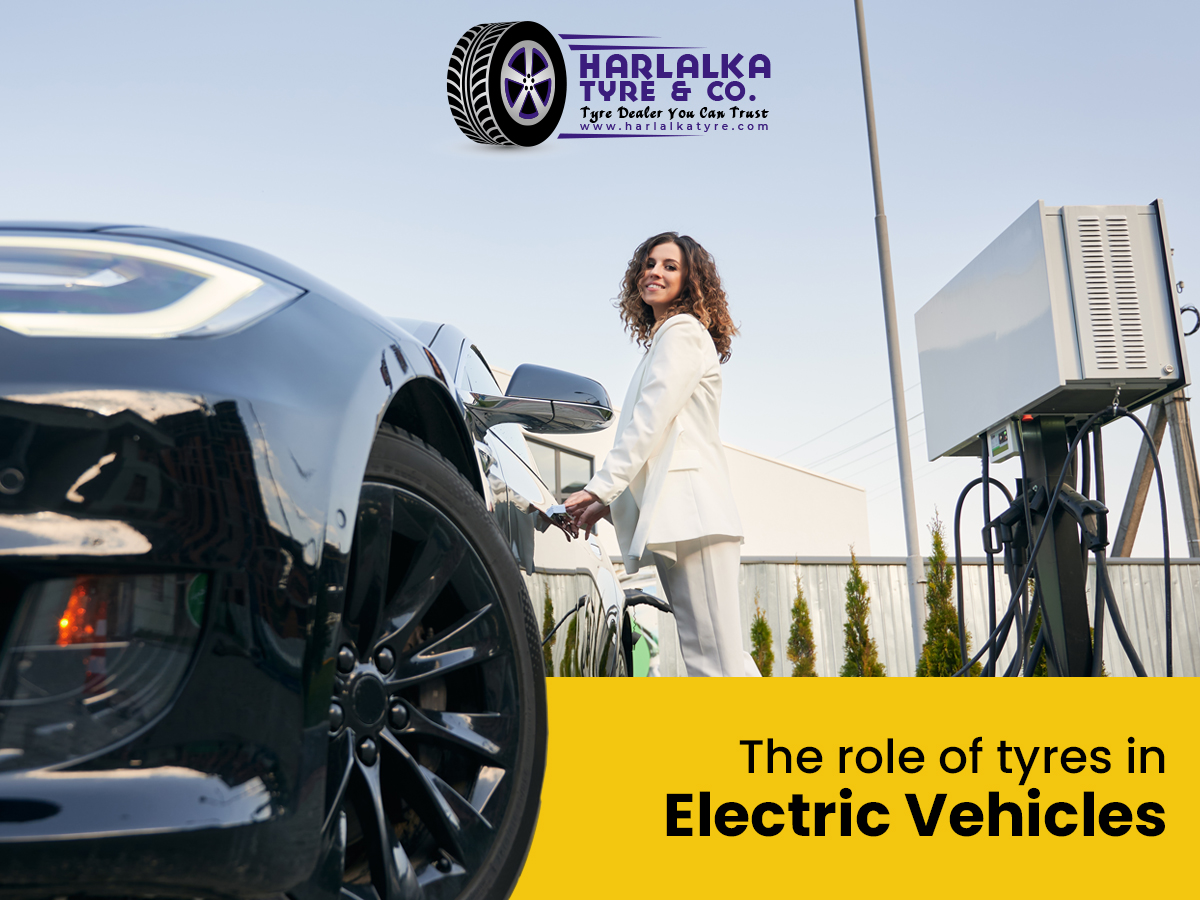






June 16th, 2025 by harlalka
The world these days is shifting towards driving electric vehicles, transforming the way we drive and how every component of a car is engineered. Tyre is one such component – despite its importance it is rather underestimated. Unlike traditional vehicles, an electric vehicle asks for a lot more from its tyres in areas such as performance, sustainability, and durability. I
The effect of instant torque on tyres
A defining feature of an electric vehicle is the instant torque that its tyres provide it with. As opposed to ICE (internal combustion engine) vehicles that build torque gradually EVs provide immediate acceleration. This indeed improves driving dynamics and responsiveness but it also places additional stress on the tyres. Such sudden torque increases tread wear especially at the time of regenerative braking and rapid acceleration. Therefore, the tyres to be used in EVs must be designed to deal with higher levels of stress without compromising on longevity and grip. Specialised EV tyres often have advanced rubber compounds and reinforced structures that can handle the extra pressure.
Heavier loads mean stronger tyres – the importance of weight in these cases.
Electric vehicles are usually heavier than ICE vehicles because they carry huge battery packs and this tends to be a major factor for the tyres. For example, an EV could be anywhere between 10% and 20% heavier than a similar vehicle that runs on fossil fuels. This added weight affects the wear and tear suffered by the tyres, overall handling, and braking distance. To support this additional load, EV tyres must have a higher load index rating. Makers of such vehicles also employ unique tread patterns and stiffer sidewalls so that the tyres can maintain optimal contact with the road.
Noise reduction for quieter rides
Electric vehicles do not have any engine noise and this is why they are inherently quieter. This also makes other sounds like tyre-road noise a lot more noticeable. This is the reason why companies making tyres for electric vehicles must emphasize minimizing the rolling noise so that they can maintain the quiet driving experience that an EV promises. To address this particular area, tyres made specifically for EVs use noise-reducing technologies like variable pitch tread blocks and foam-lined interiors. These features can reduce decibel levels and dampen vibrations which make the cabin experience a lot more serene.
Energy efficiency and rolling resistance
An electric vehicle needs to be efficient above everything else so that it can maximize the driving range. Tyres play an important role in this context by way of the concept of rolling resistance. This is the energy a tyre loses when it rolls on the road. If a tyre has a high rolling resistance it means that you need more energy to keep the vehicle moving and this can lower an EV’s range substantially. However, EV-optimised tyres are engineered in such a way that they can maintain good traction and still minimize rolling resistance.
Tread design for regenerative braking
Regenerative braking is yet another unique aspect of an electric vehicle. In this case, the vehicle’s internal system captures kinetic energy at the time when you apply the brakes and converts it to electrical energy so that it can recharge the battery. This is indeed helpful in making the car more efficient but this can affect braking dynamics of the vehicle as well. EV tyres have to be engineered so that they can handle these frequent braking patterns that can be aggressive at times as well. The tread designs must be tailored to offer better grip when the car is decelerating without sacrificing comfort while ensuring safety.
Materials and sustainability
Sustainability is a fundamental aspect of the EV innovation and for that tyre makers are developing environment-friendly tyres. For this, they often include sustainable materials such as silica, bio-oils, and natural rubber. This also reduces the carbon footprint that the tyre production process might have. On top of that, they are made to last longer with reinforced construction which reduces the possibility of frequent replacements. These days, some brands are also looking at retread-able or recyclable tyre designs to complement the green promise that electric mobility makes.
EVs do not need as much overall maintenance as an ICE vehicle but tyre maintenance is a crucial aspect. Thanks to the extra torque and weight of these vehicles you have to rotate the tyre, align them, and check their pressure at regular intervals to make sure that they are performing well and operating safely.